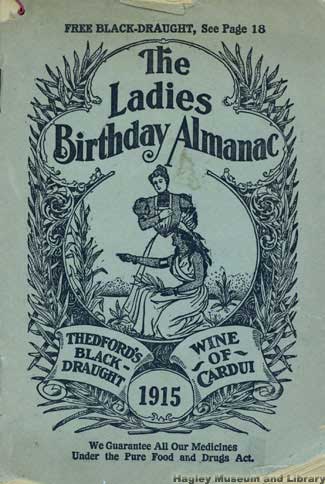
Chattanooga, Tennessee
Ladies Birthday Almanac, 1915
This almanac advertised two nostrums, Thedford's Black-Draught and Wine of Cardui, both marketed to women. The almanac promised relief from women's typical ailments: cramps or "women's pains," weak or painful back, indigestion, fatigue from hard work, insomnia, liver trouble, chills and fever, and general female physical weaknesses. The Ladies Birthday Almanac was published by the Chattanooga Medicine Company as early as 1891. The almanac contained weather information, important dates and, of course, ads for all of the company's products.
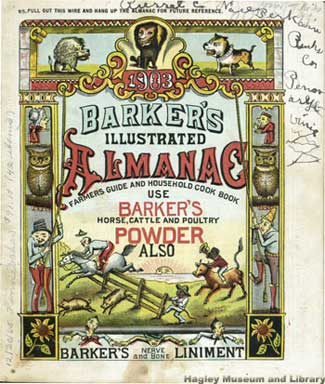
Company, Philadelphia, PA
Barker's Illustrated Almanac, Farmer's Guide and Household Cook Book, 1903
Brightly colored and humorous like Barker's Komic Picture Souvenir, this almanac advertised Barker's three famous compounds: Barker's Horse, Cattle and Poultry Powder, Barker's Nerve and Bone Liniment, and Barker's Healing Ointment.
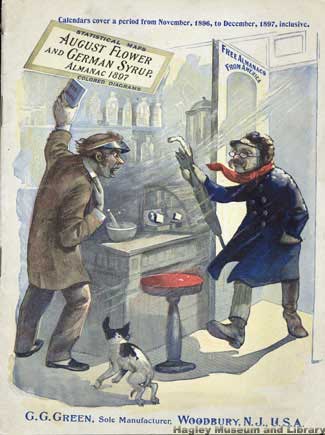
Woodbury, New Jersey
August Flower and German Syrup Almanac, 1897
Almanacs were a very popular medium for patent medicine advertising. The G. G. Green Firm's claim to fame was their Green's August Flower and Boschee's German Syrup. The firm published an almanac from circa 1870 to the early twentieth century.

Merchant's Gargling Oil, 1886 / 1890
Merchant’s Gargling Oil was a "liniment for man or beast." It was manufactured from 1833 to the early 20th century. It was primarily used as a topical ointment to treat horses and other animals for burns, scalds, sprains, and bruises. Gargling Oil could also treat a variety of strange ailments, including foundered feet, horn distemper, sitfast, ringbone, swelled legs, poll evil, foot rot in sheep, garget in cows, roup in poultry, and mange.
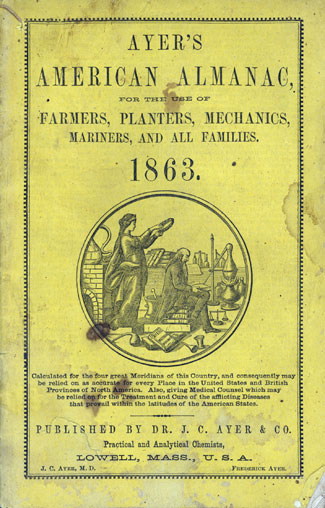
Lowell, Massachusetts
Ayer's American Almanac, 1863
More like a medical handbook than an almanac, Ayer's American Almanac listed various diseases, symptoms, remedies, directions, and testimonials from cured patients. Ayer's Compound Extract of Sarsaparilla was prescribed for Scrofula or King's Evil (a form of tuberculosis affecting the lymph nodes). Other remedies included Ayer's Ague Cure for chills and fever, Ayer's Cherry Pectoral as an expectorant for diseases of the throat and lungs, and Ayer's Cathartic Pills "for all the purposes of a family physic."
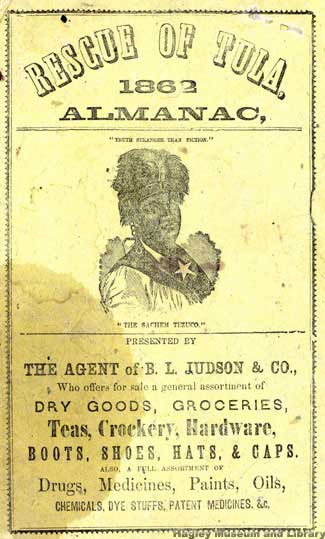
Rescue of Tula Almanac, 1862
The B. L. Judson & Company published an almanac promoting "Judson's Mountain Herb Pills." Like so many others, the company claimed the pills cured diseases of the chest and lungs, diseases of the bowels and stomach, dyspepsia, fevers and ague, and female complaints.

